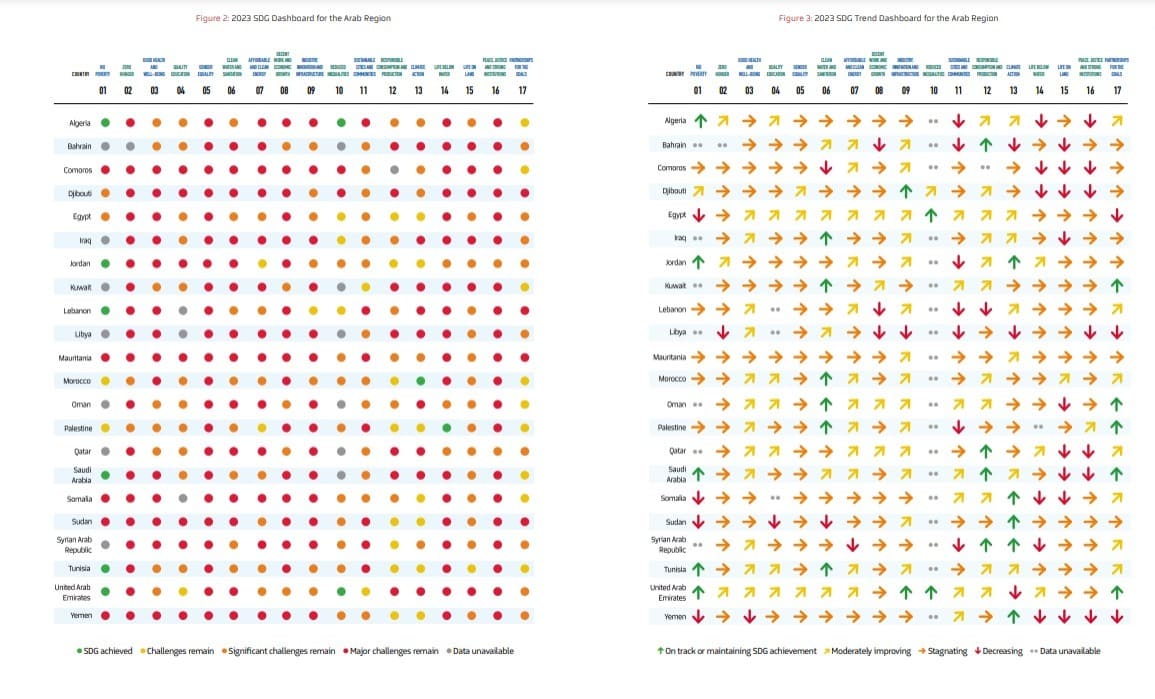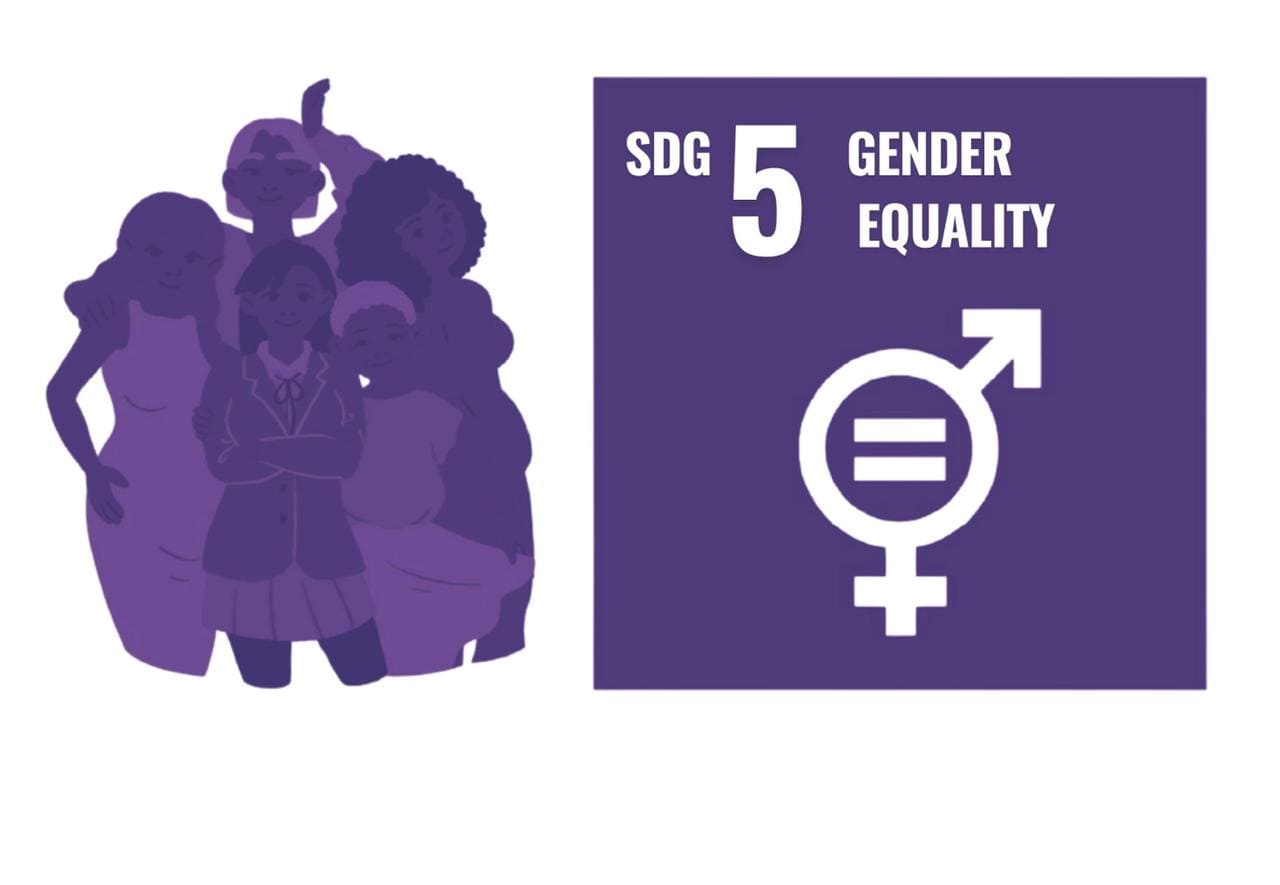As we celebrate International Women’s Day on March 8, 2024, let us reflect on the progress, or the lack thereof, towards achieving the Sustainable Development Goals (SDGs) set forth by the United Nations in 2015 under the UN Agenda 2030. Among these goals, SDG5 stands out as it aims to achieve gender equality and to empower all women and girls. Unfortunately, progress towards the SDGs in general has been disappointing, and in the MENA region in particular. At the current pace, it is evident that the SDGs, including SDG5, will take several decades to achieve, despite being less than six years away from the SDGs target date of 2030.
There is a simple reason for the world’s failure to achieve the SDGs. We are trying to deliver economic and social transformation in a global system that still operates under a colonial global economic architecture that was built on hierarchical, extractivist, abusive, and unequal modes of operation, deliberately designed to benefit the Global North at the expense of the Global South.
In essence, the realization of all SDGs, especially SDG5 hinges upon the urgent need to decolonize the global economic architecture, which includes transforming the financial architecture, the rules of international trade and investment, and the international tax system. Without addressing these fundamental issues, achieving gender equality and empowering all women and girls will remain nothing but a fleeting illusion.
The MENA region, with its rich cultural heritage and diverse societies, exemplifies the complexities of navigating towards gender equality within a colonial economic structure. Despite efforts to promote women’s rights and participation in various aspects of society, significant challenges persist. These challenges are deeply rooted in structural inequalities perpetuated by historical legacies and patriarchal systems.
Figure 1: MENA region progress on SDG5

While some progress has been made in certain areas, such as education and workforce participation, the reality is that women in the MENA region continue to face numerous barriers to equality. These barriers manifest in various forms, including limited access to economic opportunities, legal discrimination, cultural norms, and persistent gender-based violence. 61.5% of women in Yemen suffer from anemia, while one in three Arab women have anemia because of malnutrition.
According to the International Labour Organisation, female unemployment in the Arab region is three times higher than the world average, standing at 15.6%. Arab female labor force participation is the lowest in the world at 18.4% compared to the world average of 48%. Furthermore, only 11% of managerial positions are held by women in the Arab region compared to the world average of 27.1%. Additionally, Arab women spend almost five times more hours on unpaid care work than men in the region.
Moreover, the ongoing conflicts and instability in several countries across the region exacerbate the plight of women, leaving them disproportionately affected by displacement, poverty and lack of access to essential services. In conflict affected areas, women often bear the brunt of the crisis, yet their voices and needs are frequently sidelined in decision-making processes. This conflict backdrop hampers the crucial regional cooperation needed for SDG implementation. Even if conflicts were to cease immediately, traditional methods would not suffice to achieve the SDGs by 2030, which is why we need a complete development paradigm shift.
In order to truly advance gender equality in the MENA region, there must be a concerted effort to dismantle the structural barriers that impede women’s empowerment. This required not only legislative reforms and policy interventions but also a fundamental shift in the economic paradigm towards one that is inclusive, equitable, just and decolonized.
Furthermore, empowering women is not only a moral imperative but also a strategic one. Women make a significant contribution to economic growth, social cohesion, and environmental sustainability. Investing in women’s education, healthcare, and economic opportunities is essential for achieving the SDGs and building more resilient and inclusive societies in the MENA region, which can unlock its full potential for a more just and prosperous future for all.
However, when countries are burdened by massive external debts that minimize the fiscal policy space available for the much needed strategic investments to advance development priorities, it becomes impossible to achieve any of the SDGs. In other words, addressing the external debt crisis becomes a prerequisite for achieving the SDGs. However, external debt is a symptom of three structural colonial traps: food deficits, energy deficits, and manufacturing deficits.
According to ESCWA, Arab countries import 50% of the calories they consume. The region imports 63% of the wheat consumed, and the GCC countries import more than 90% of their needs. Annual food imports in the Arab region amount to $110 billion.
With the exception of the oil-rich countries in the Arab region, most countries are heavily dependent on energy imports despite having a huge renewable energy potential. According to ESCWA, countries like Morocco, Jordan and Lebanon import more than 90% of their energy needs, with energy subsidies reaching $10 billion annually in Egypt and Algeria, and a whopping $30 billion in Saudi Arabia.
And when it comes to industrial activity, the Arab region is locked at the bottom of the global value chain with a manufacturing base that imports technology, intermediate components, fuel to power its factories, and even the packaging. The result is low value-added exports relative to the high value-added content of the region’s imports.
These three structural deficits weaken Arab currencies relative to the US dollar, which renders the region’s imports of critical supplies more expensive, thus forcing Arab governments to subsidize food and fuel imports and to borrow more dollars to stabilize their currencies. And it is this excessive borrowing that eliminates the much needed fiscal capacity to invest in strategic priorities that allow the region to achieve SDG5 and the rest of the SDGs.
To achieve the SDGs the MENA region must decolonize its economic structures by prioritizing regional cooperation for strategic investments in food sovereignty and agroecology, investment in renewable energy sovereignty, and regional industrial policies that leverage the complementarity of MENA’s resources and capabilities to focus on high value-added industrialization. The MENA region must also enhance its strategic cooperation with other Global South countries that can complement and accelerate the deployment of these transformative policies. Only then will we have the chance to deliver the needed results on all the SDGs, including SDG5.




